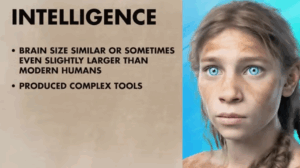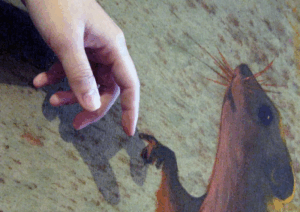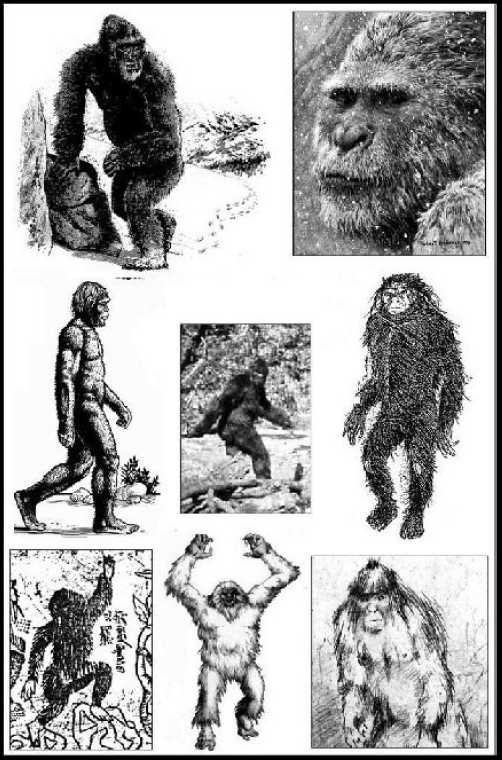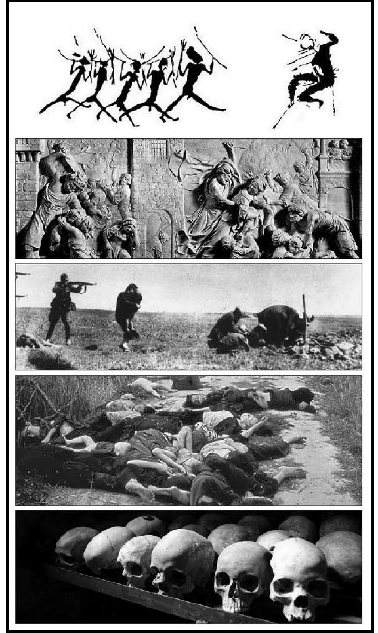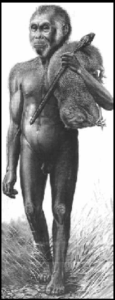Hatnote. Below I reproduce the foreword to my new anthology which, although ideally I would have the funds to publish it as a printed book, will only be available as a PDF for the time being.
The foreword includes some passages I quoted on Saturday about a case Jung studied, but what the foreword omits is that most of the new PDF consists of edited content from another PDF, On Exterminationism, which I will delete when the new one is finished and published under another title, Neanderthal Extermination.
As I confessed recently, Vendramini’s book has changed my worldview so much that after finishing reviewing the PDF I will have to write a new featured post, which until now has been the article entitled ‘The Wall’.
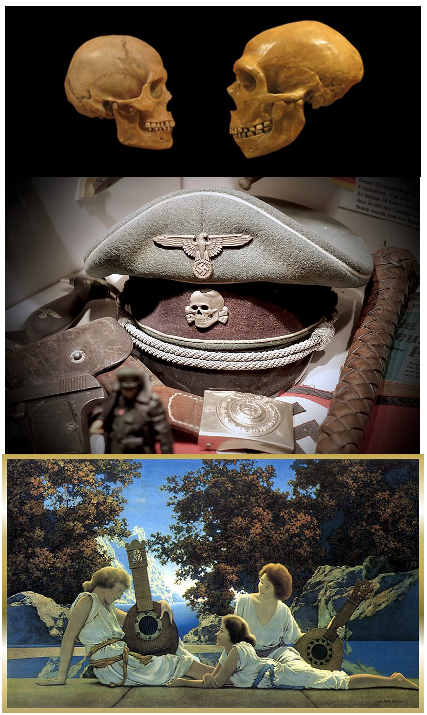
The cover of Neanderthal Extermination.
Foreword
From the mid-1970s onwards, my teenage life was destroyed not only by my parents’ abuse, but also by a psychiatrist they hired to finish me off.
Discovering an area of research that significantly improves my view of the world has only happened to me occasionally. In 1983, for example, I discovered an interview with Theodore Lidz in a bookshop that made me realise that not all psychiatrists were depraved individuals who sided with abusive parents in conflict with their children. When talking about possessive mothers who came to his office and co-dependent fathers who fell into a state of folie à deux with them, Lidz seemed to portray the dynamics of my family as if he had lived with us! And unlike the vast majority of his colleagues, Lidz and other professionals knew that such parents can drive their children mad. My discovery of that book marked the beginning of my familiarisation with the trauma model in the decades that followed. Unlike the pseudo-scientific model of orthodox psychiatrists, I eventually came to understand my parents’ behaviour.
But the damage to my mind due to abuse at home was already done, and I was unable to pursue a career, instead becoming alienated in cults and pseudosciences of the paranormal. The next milestone in my intellectual life came in 1990, when I began reading the sceptics of parapsychology, thanks to the group led by Paul Kurtz whom I had met at the end of the previous year at some lectures they gave in Mexico City. Thanks to their work I realised that parapsychology was also a pseudoscience.
In 2002, I discovered the books of Swiss psychologist Alice Miller: the first writer to take the side of the abused child one hundred per cent, thanks to whom I was able to heal my still wounded heart. But it was not until late 2008 that I discovered, thanks to the internet, that millions of Muslims were migrating to Europe, replacing the native population. I became so obsessed with the subject—which, unlike the others, could only be discussed on the internet—that the following year I came across articles in The Occidental Quarterly Online that revolutionised my worldview. It was only thanks to this latest discovery that I began a career as a blogger with my The West’s Darkest Hour, to which I eventually gave an anti-Christian slant: insofar as ideas about racial egalitarianism and humane universalism have a Christian aetiology, regardless of Jewish subversion in the media.
It was precisely because of this neo-Nietzscheanism that, at Christmas 2018, my next intellectual milestone was to realise that the historicity of Jesus had been seriously questioned. In my spiritual odyssey I owe this new discovery to Richard Carrier’s work on the New Testament. For someone who sixty years earlier had been baptised by the famous Jesuit Joaquín Sáenz y Arriaga, a friend of my very Catholic parents, Carrier’s discovery was a real milestone as the Christian doctrine of eternal damnation had virtually driven me mad in my teens and twenties.
Thus, at the ripe old age of sixty-seven, I never imagined that another author could further improve my worldview. But the miracle happened in August 2025, the month in which I am writing this prologue. I am referring to Danny Vendramini’s Them and Us.
But why was a book that attempts to revolutionise our view of the interaction between Neanderthals and our distant ancestors also a milestone? To answer that, I would have to go back once again to the fateful 1970s. It was in the same decade that my parents murdered my soul that I coined the phrase ‘the extermination of the Neanderthals’. But to understand it, I would have to go back even further, to the 1960s.
As I recount in a passage from my autobiographical trilogy, when I was a small child, going with my family to downtown Mexico City, I was horrified by the people I saw there. Compared to the beautiful Colonia Del Valle where we lived, the city centre was a horrible place, and the people I saw there seemed horrible to my eyes. So much so that years later, when I was eleven, I once told my younger siblings (I am the eldest) that I wanted to machine-gun ’em all.
It was those exterminationist desires that, in the following decade, when my parents began to mistreat me, spawned the tremendous call to exterminate Neanderthals. I cannot pinpoint the exact year when I came up with that phrase, but if we fast forward fifty years later I discovered an eloquent book that talks about how Neanderthals were, in fact, exterminated! Although a few years earlier I had heard, albeit only in passing, that Cro-Magnons had eliminated the Neanderthals, Vendramini’s book paints a picture of Cro-Magnons in such a way that their psychology seemed like a super-accurate X-ray of my old exterminationist passion.
The point is that in the 1970s I had never heard that Cro-Magnons had exterminated Neanderthals, nor in the 1980s, 1990s or the first decade of the new century. If Vendramini and others are right, how could I have sensed it? Yes: it could have been a mere coincidence. Another possibility is that Carl Jung is right. In Man and His Symbols, he said:
The archetype in dream symbolism
By “history” I do not mean the fact that the mind builds itself up by conscious reference to the past through language and other cultural traditions. I am referring to the biological, prehistoric, and unconscious development of the mind in archaic man, whose psyche was still close to that of the animal… My views about the “archaic remnants,” which I call “archetypes” or “primordial images,” have been constantly criticized by people who lack a sufficient knowledge of the psychology of dreams and of mythology.
The Swiss psychologist illustrated this with a case that impressed me:
A very important case came to me from a man who was himself a psychiatrist. One day he brought me a handwritten booklet he had received as a Christmas present from his 10-year-old daughter. It contained a whole series of dreams she had had when she was eight. They made up the weirdest series of dreams that I have ever seen, and I could well understand why the father was more than just puzzled by them. Though childlike, they were uncanny, and they contained images whose origin was wholly incomprehensible to the father. Here are the relevant motifs from the dreams.
I’ll just mention a couple of them, and Jung’s brief interpretation that describes what we call the collective unconscious:
A drop of water is seen, as it appears when looked at through a microscope. The girl sees that the drop is full of tree branches. This portrays the origin of the world.
A small mouse is penetrated by worms, snakes, fishes, and human beings. Thus the mouse becomes human. This portrays the four stages of the origin of mankind…
Precisely a mouse-like creature that survived the asteroid that killed the dinosaurs was our remote ancestor. Unfortunately, something happened to the little girl:
The father was convinced that the dreams were authentic, and I have no reason to doubt it. I knew the little girl myself, but this was before she gave her dreams to her father, so that I had no chance to ask her about them. She lived abroad and died of an infectious disease about a year after that Christmas.
If the Cro-Magnons wiped out the Neanderthals—in addition to Vendramini, this is a common opinion among many other scholars—the study of archaic remnants could shed light on my desire to ‘exterminate the Neanderthals’; and why it took hold of my psyche, from my adolescence, until it became a true personal religion. Although in his book Vendramini mentions Jung’s collective unconscious in passing, he attempted to give it a scientific basis with the theory of teems: that archaic remnants or primordial images could be hidden in our ancestral DNA. The big question is, could the genocidal passion that sprang from the depths of my being have been unleashed when I found myself in an extreme situation?
As for why Vendramini’s work has not been addressed in academia, it has to do with the fact that the Establishment is composed of those I call hyper-Christian atheists, in the sense that they have taken not only racial egalitarianism and catholic universalism as dogma, but also love for all wingless bipeds as the new faith of secular man. This axiological phenomenon, which is nothing more than folie en masse, began with the fateful defeat of Adolf Hitler’s Germany in 1945. The post-1945 System simply ignores any data that might inspire whites to ethnically cleanse the West of non-white invaders. For example, the neochristians who have uploaded videos purporting to refute Vendramini have resorted to gross distortions, straw men and even lies. As I said at the end of my article ‘Youtubers’: ‘Only when academia returns to the hands of scholars who don’t hate the white man—and that would only happen after a revolution—can Vendramini’s work be valued on its own merits’ [footnote].
______ 卐 ______
This book is composed of three sections. The first section quotes key passages from Vendramini’s book.
The second section collects entries from my blog, including repeated quotes from William Pierce’s The Turner Diaries, culminating in my brief exterminationist manifesto.
The third section complements the embryonic precepts of my new religion with more edited entries from The West’s Darkest Hour, and the appendix demonstrates that the ancient Indo-Aryans would share this exterminationist passion when the dark age arrived.
César Tort
27 August 2025



